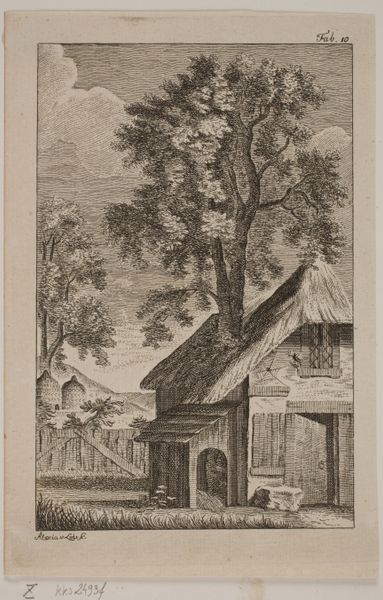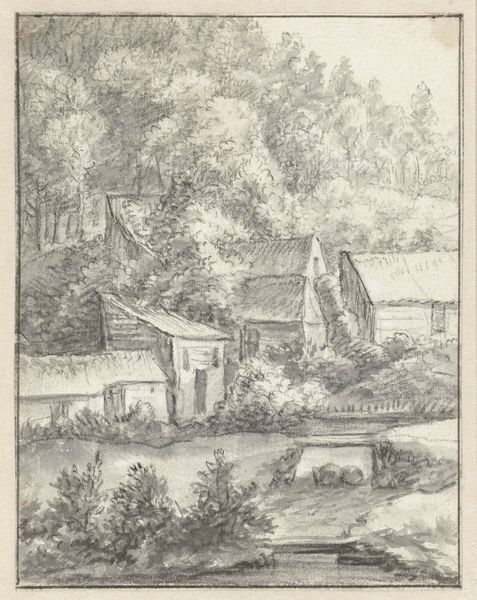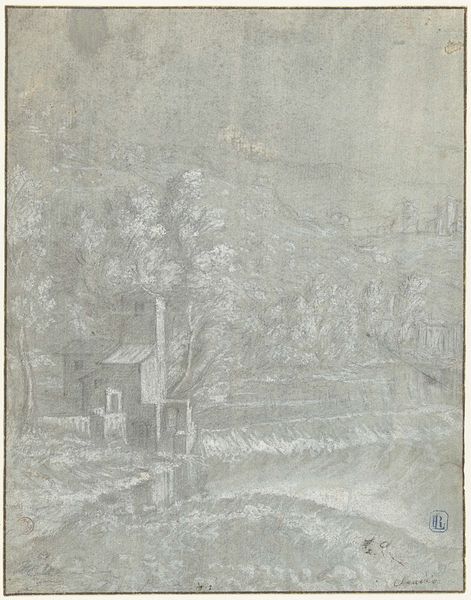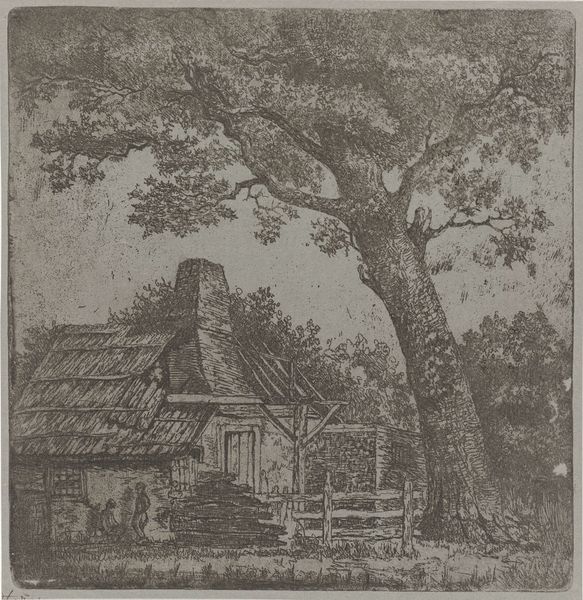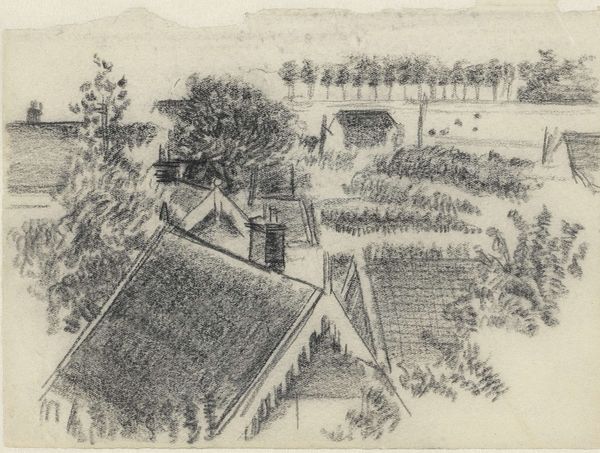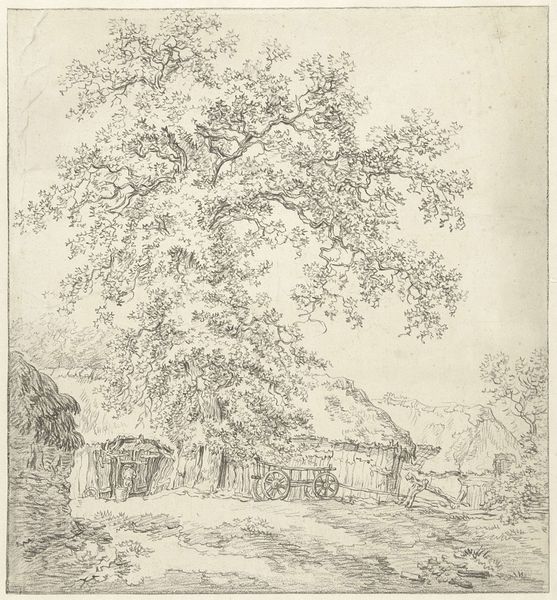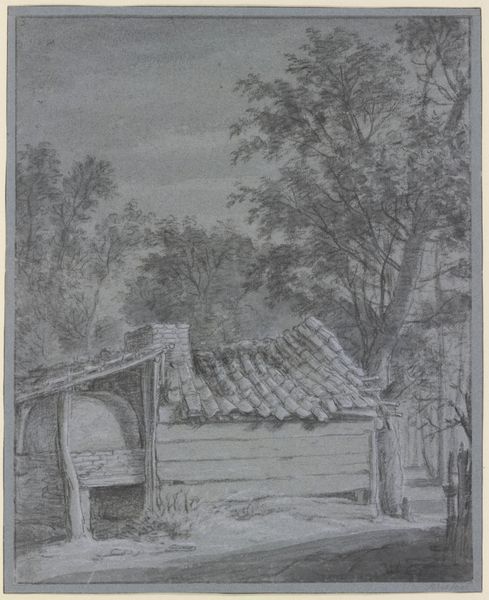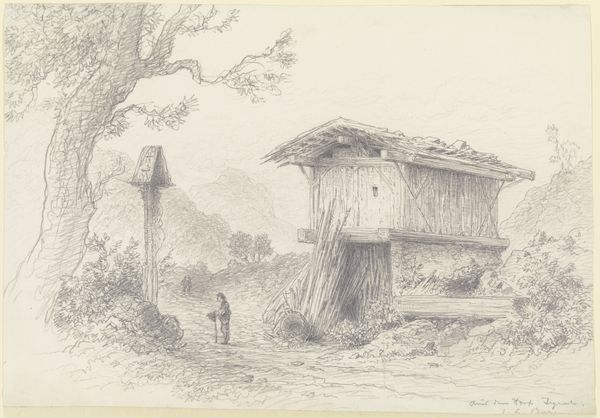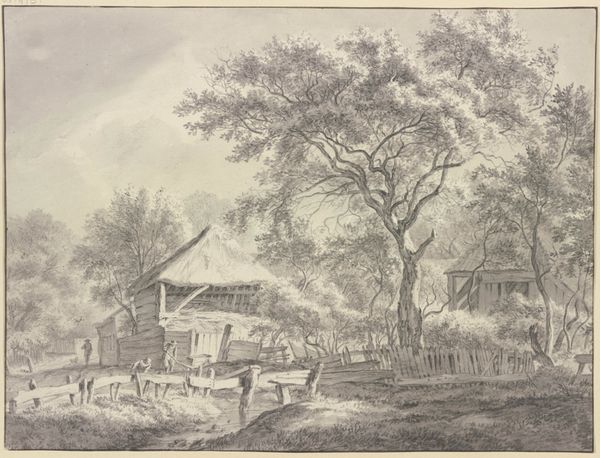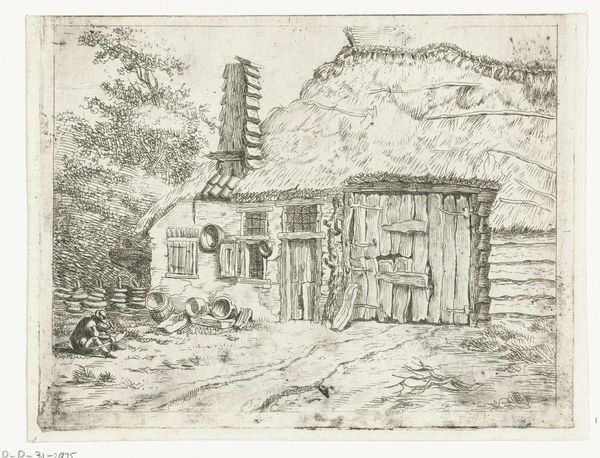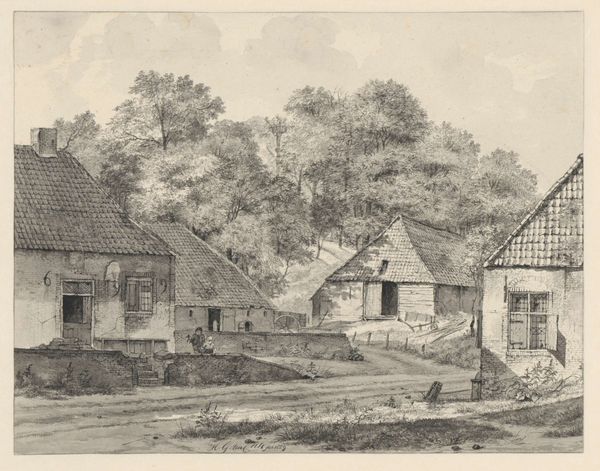
drawing, pencil
#
drawing
#
dutch-golden-age
#
landscape
#
pencil
#
genre-painting
Dimensions: height 187 mm, width 144 mm
Copyright: Rijks Museum: Open Domain
Editor: "Huizen tegen een beboste helling," or "Houses Against a Wooded Slope," created sometime between 1619 and 1690 by Anthonie Waterloo, is a detailed pencil drawing held at the Rijksmuseum. I’m immediately struck by the density of the forest looming over these small, almost fragile looking homes. It makes me wonder, what can you tell me about it? Curator: What strikes me is the idealization of rural life presented during a period of rapid urbanization in the Dutch Golden Age. The drawing participates in a broader cultural fascination with the countryside, even as cities like Amsterdam were booming commercially and drawing people away from agricultural communities. Note how Waterloo’s composition invites the viewer into a peaceful, almost untouched setting. Does it accurately portray reality, or does it serve a specific cultural function? Editor: So, you're saying that it might be less of a true-to-life depiction and more of a constructed image promoting certain values? Curator: Exactly. The genre paintings that were prevalent in the Dutch Golden Age, particularly landscapes like this, didn't simply reflect reality. They also shaped perceptions and reinforced certain social ideologies. These idealized settings offered an escape from the increasing pressures and complexities of city life. Think about how the burgeoning merchant class might have viewed an image like this – a reminder of simpler times, perhaps, and an affirmation of traditional values. Editor: That's really interesting! It challenges my initial idea of landscape art as purely representational. I hadn't considered the possible socio-political motivations behind what looks like a simple scene. Curator: Precisely. And consider the role of the Rijksmuseum itself in preserving and exhibiting such a work centuries later. How does showcasing this artwork contribute to the construction of Dutch national identity and cultural heritage? Editor: Wow, I hadn’t thought about it that way, but it does give a new depth to what I see here. I appreciate how thinking about social forces gives a richer reading to this Dutch Golden Age drawing! Curator: Indeed. By exploring these dimensions, art becomes much more than what immediately meets the eye.
Comments
No comments
Be the first to comment and join the conversation on the ultimate creative platform.
